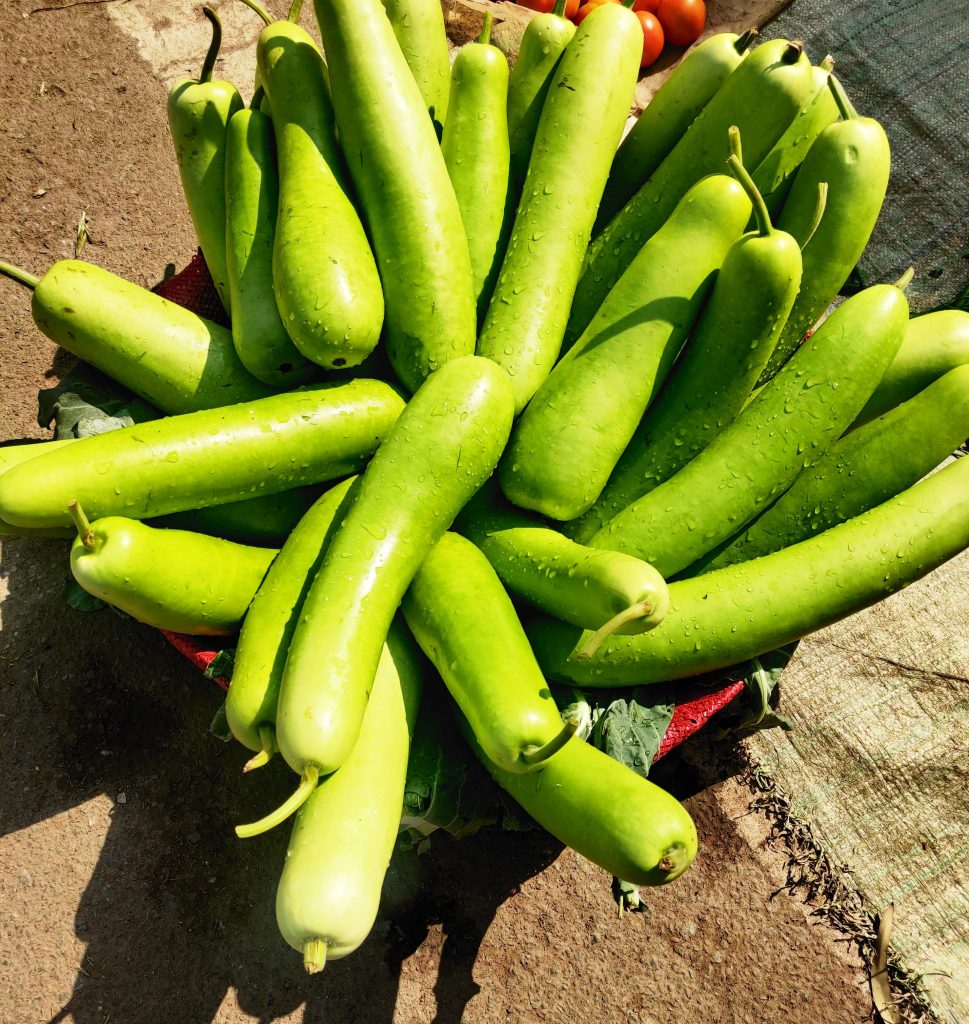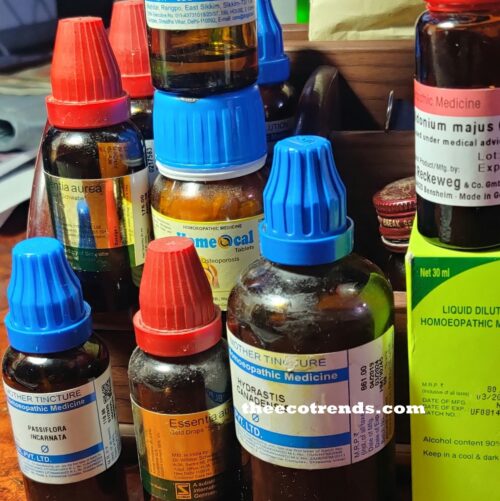Bottle Gourd is also known as Calabas, White- flowered Gourd and Tasmanian Bean. Taxonomically, it is known as Lagineria siceraria belonging to the family Cucurbitaceae. It is a vine which is cultivated for its fruit used as a vegetable.
In olden days bottle gourds were dried, evacuated and used as utensils or kamandalus (water holding pots with handle) of Munis (sages). Its old empty fruits are also used in making musical instruments like veenas of different types.
Morphology of the plant
The bottle gourd plant is a creeper modified sometimes as climber. It is annual, herbaceous, and delicate.
The stem is usually prostrate, angular, ribbed, thick, brittle and hairy. If its tip is cut, it proliferates into many branches.
Leaves are simple, up to 400mm long and up to 400mm broad. The petiole is long. The leaves are 5 lobed, cordate and hairy. Leaf stalks are up to 300mm long. Tendrils are long and they split into two. Flowers are white in colour. They are long stalked.
However, the male flowers have longer stalks. Flowers are solitary, unisexual, and axillary with 5 petals. Fruits of bottle gourd are found in a variety of shapes like big round, long cylindrical, slim serpentine, or double round.

Background
The bottle gourd in ancient times, were grown for making utensils by emptying them. It is native to Asia but now widely cultivated in Africa, Europe, and America. It is considered that its seeds might have been spread across the world by navigators.
Archaeological proofs reveal that bottle gourds were grown in China and Japan around 9000BP.Now bottle gourds are commonly cultivated in tropical and sub-tropical areas.
Growing Bottle Gourds
Seeds of the Bottle Gourds are sown to produce seedlings that are transplanted within 20 to 30 days of germination in properly prepared pits. Pits are filled with good soil rich in organic substances. The plants like well drained soil in sunny conditions.
It is disturbed by wind because it has no strong and erect stem. It soon develops into a creeper taking support through long spring shaped tendrils. Once helped to climb on a thatched roof, the stem of bottle gourd can spread in the whole area by taking support through its long tendrils. It can be grown on artificially made platforms of bamboos and ropes or rellings.
Pollination and Fertilization
Flowers are white and separate. They bloom during nights. Male and female flowers of bottle gourd have long peduncles. However peduncles of male flowers are longer.
Pollination usually occurs during nights because female flowers usually open wide during nights. If not pollinated for long time, the female flowers dry and fall down. Farmers often pollinate female flowers by touching male flowers with them.
Nutrients
Bottle gourd fruits have more carbohydrates than fat or protein. However, fat is very less (about 0.02g per 100g). Dietary fibre contained in per 100g is about 1.2g and Protein is about 0.6g per 100g of sliced bottle gourd. It has vitamin A, B1, B2, B3, B5, B6 and B9 and Vitamin C. It contains 24mg of Calcium, 0.25mg of Iron, 11mg of Magnesium, 13 mg of Phosphorus, 170mg of Potassium in 100g juice of sliced flesh of bottle gourd.
Uses
Bottle gourd fruits are used for making vegetables by mixing with many different items. Its fine pieces are mixed into pulses and cooked. During the vrat of Surya Shashti its plain vegetable is cooked to be taken with rice called as Kaddoo-Bhat. Kheer, Chutney, fish-curry, prawn-curry etc. are prepared by mixing bottle gourd, in different parts of India. Juice of bottle gourd is a perfect drink which offers many health benefits.
Health Benefits of Eating Bottle Gourd
Bottle gourd is one of the healthiest vegetables. It contains about 92% of water. It is reported to lower bad cholesterol and help our heart.
Fresh juice of bottle gourd provides radiant and energetic life and helps in cleaning our body systems.
It is a rich source of vitamin K and Calcium. Its juice is reported to be beneficial for diabetic persons. It maintains blood pressure. Its juice cools our body and keeps it hydrated.
It helps in weight loss also. Besides vitamins, juice of Bottle Gourd also contains minerals like Iron, Folate, Potassium, and Manganese. It is a natural remedy for treating UTI. It helps in curing constipation due to its rich fibre content.
Bottle Gourd removes stress, depression and other mental dysfunctions. It is reported to improve the efficiency of our muscles. When boiled in oil and consumed, it acts as a natural sedative.
Antioxidants found in the bottle gourd help in removing inflammation of liver as they remove toxins. They protect liver and kidney against oxidative damage.
Wide range of chemical compounds including sterols, terpenoids, flavonoids, saponins etc. are found in the bottle gourd. It is reported to be anthelmintic and anti-bacterial.




